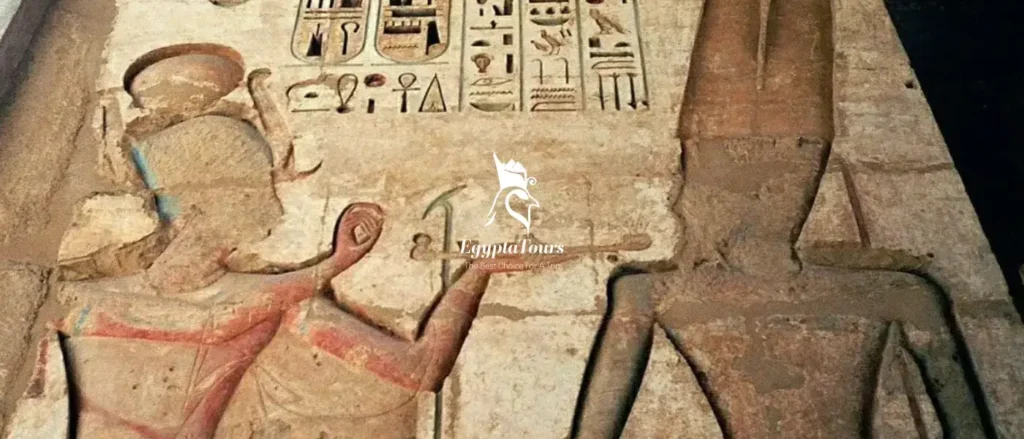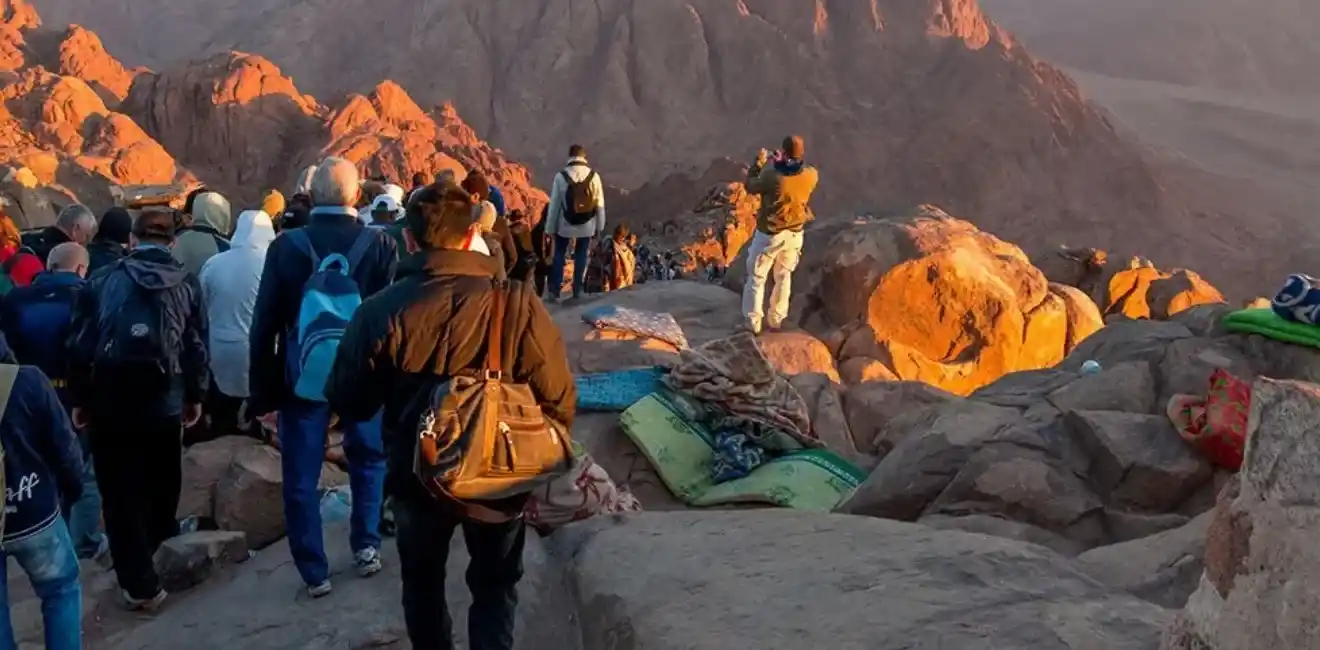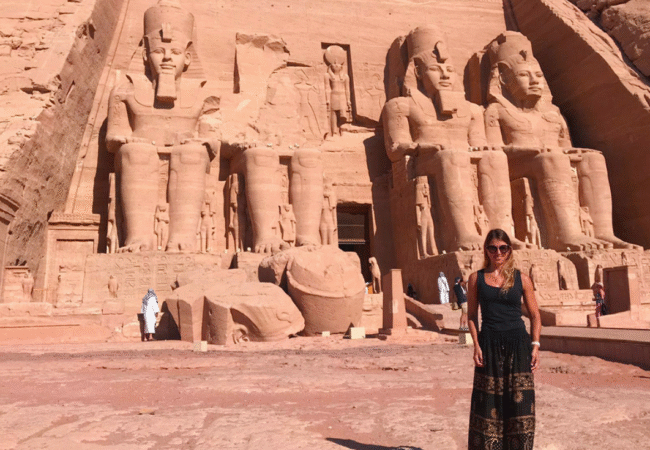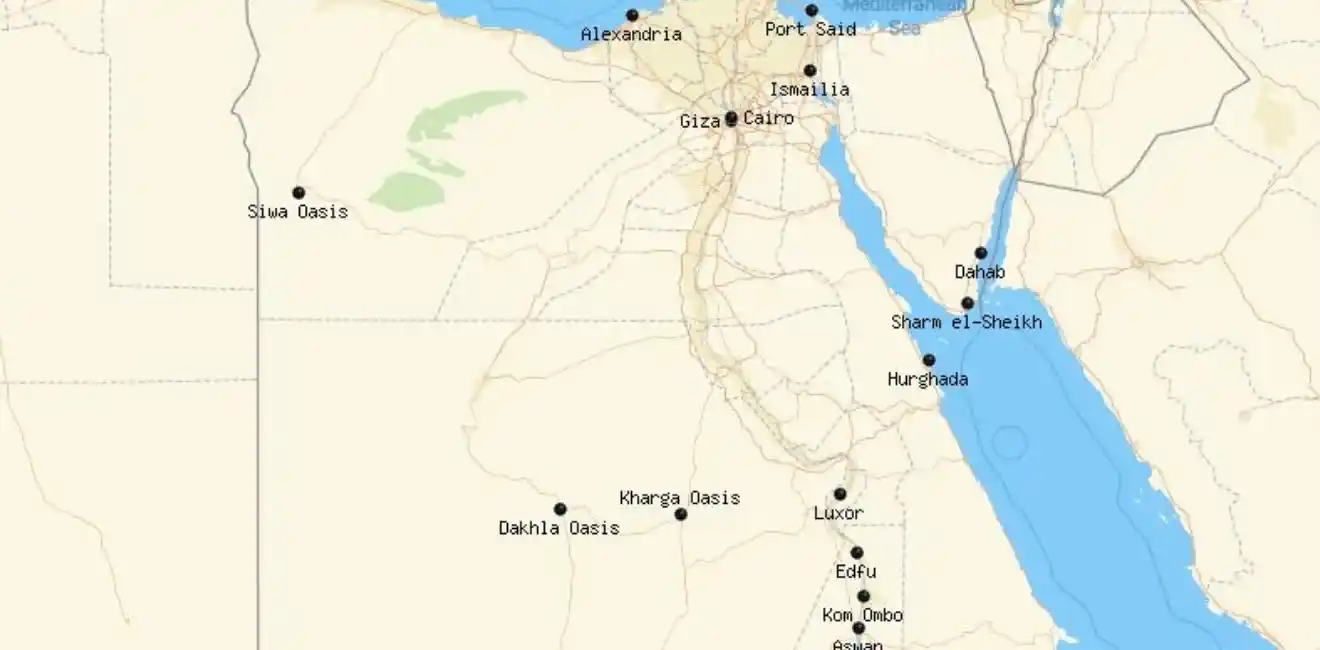
Top 10 Amazing Ancient Egypt Inventions
When you think of ancient Egypt, you probably think of mummies, pyramids, and cursed tablets. But did you know that there are more than 10 amazing ancient Egypt inventions that are still used today?
The Pharaohs of Egypt presided over a massive kingdom for thousands of years, taming vast tracts of wilderness, erecting monuments that have stood the test of time, and creating stories that have since become myths.
But there are many lesser known 10 amazing ancient Egypt inventions that have been passed down to us, and many of them are still in use today. This article covers ten of them, exploring how they emerged, the role they played in Egyptian society, and their legacy in today’s world.
List of 10 Amazing Ancient Egyptian Inventions
1- Bowling

In the early 19th century, British archaeologist William Matthew Flinders Petrie led a number of important excavations across Egypt, exhuming nearly 3,000 ancient tombs filled with personal belongings and items to protect the soul in the afterlife.
Unfortunately, many of these graves belonged to children, and it was in one of these graves that Petrie made one of his most surprising discoveries: a set of skittles. The tomb, which dates back to 5200 BC, contains a number of balls and nine stones in the shape of vases, according to Petrie.
At first, archaeologists considered these ornaments, but they soon realized they had discovered the oldest evidence of bowling, one of the 10 amazing ancient Egypt inventions.
It is thought that the ancient game was somewhat different from the organized, and often highly competitive, version played today; It simply involves rolling a ball over a set of fixed objects at a specified distance.
It is unlikely that they have specific surfaces or “alleys” to play in, or that there is any way to ensure uniform pins.
The balls were often made of corn husks, covered with leather and tied with string, but could also be made of stone or even porcelain.
The rudimentary form of bowling enjoyed by the Egyptians was later adopted by other ancient civilizations, including the Romans, and eventually evolved into the game we still play today.
2- Paper And Ink

The second invention among 10 amazing ancient Egyptian inventions. Although the invention of writing preceded the Egyptians, paper and ink, which we now consider inseparable from the written word, were ancient Egyptian inventions.
It was not paper as we know it today, but rather an introduced material called papyrus, named after the grassy reeds that grow along the Nile River, from which the material was made.
For many years, historians have tried to determine the exact methods Egyptians used to turn this plant into a writing surface, but the records are frustratingly vague. However, it is believed that the first step involved cutting the log into strips, which were then soaked to expand the fibres, and placed in overlapping layers.
It was then compressed, either by hammering, rolling or pressing, until the layers merged to form a flat surface, although ancient papyrus was nowhere near as soft as modern paper. The dry Egyptian climate meant that documents made from papyrus were incredibly long-lasting.
3- Make-Up And Wigs

Here we present another one of 10 amazing ancient Egyptian inventions. For the majority of human history before ancient Egypt inventions, people’s time and effort was consumed with the necessities of life, obtaining food and shelter to survive with little time for anything else.
But as urbanization began, first in the Middle East and then in Egypt, and organized systems were put in place to provide daily life for its residents, we see ideas of leisure and entertainment emerging. Finally, people have the time and energy to look beyond the necessities, as clearly demonstrated by the skittle set above.
Cosmetics and beauty systems were also Egyptian inventions that became evident through this new trend.
There is no wonder that appearing attractive to the opposite sex has always been a human priority, whether biological, subconscious or deliberate, but the ancient Egyptians took this a step further by inventing a number of rituals and products designed to emphasize a woman’s appearance.
From removing unwanted hair with a wax-like substance made from sugar to enhancing facial features with makeup made from natural pigments including crushed beetles and poisonous lead, beauty became the primary concern of wealthy women in ancient Egypt inventions who did not have to work.
Wigs were also popular with Egyptian women. While the cheapest and most accessible wigs were made of plant fibres, the royal family made their hair exclusively from human hair, often from the Nubian peoples, to emulate the Afro style popular during the 2nd millennium BC. Queen Nefertiti herself is known to wear such pieces under her crown.
4- Barbers

Egyptian women weren’t the only ones who benefited from the new beauty craze that erupted as civilization expanded, nor were cosmetics the only ones among 10 amazing ancient Egyptian inventions that came from them.
The first barbers were also found in ancient Egypt, where records dating back to 5000 BC indicate that there were men at work cutting hair and beards using flint and sharp shells. As today, trends were subject to change: sometimes it was fashionable to be clean shaven, while at other times long hair and beards came back into fashion.
Some of the earliest shaves were performed by priests or doctors because they had a ritual or medicinal purpose, and even after they became professional, barbers were respected as skilled men. The Egyptian elite often had their own barber for their personal needs, such as a butler, or at least had one who visited the home, while for the masses, getting a haircut meant visiting one of the city’s street barbers, a tradition that still exists in many Of today’s cultures!
5- The Calendar And Timekeeping

When the time came, the people of Mesopotamia paved the way by establishing the sexagesimal system. However, the calendar and timekeeping methods known today were Egyptian inventions. Based on the cycles of the sun and moon, the Egyptian calendar was divided into twelve months of 30 days each, plus five additional days at the end of the year to bring the total to 365. It is easy to see how this invention has stood the test of time.
But, unlike us, the Egyptians knew only three seasons, which farmers used to determine when crops should be planted and harvested.
Not only were the Egyptians the first to chart the days, months, and years that are still in use today, they were also responsible for the first time-measuring devices. The oldest known sundial was discovered in 2013, excavated in the Valley of the Kings, and dates back to around 1500 BC.
However, this was not the first example of a time measuring device.
The massive obelisks, first built 2,000 years ago, were used to tell time from the way their shadows fell on their reliefs, and around the same time as the first sundials, the Egyptians made the water clock. The ability to tell time facilitated a more organized and efficient society, which means that the invention of these devices may have enabled many other innovations made by the ancient Egyptians.
6- Tables (And Other Furniture)

The humble chair and table may seem like a fairly ordinary part of everyday life. However, there are more than 10 amazing ancient Egypt inventions such as tables and chairs, where people simply sat on the floor or on small benches, and used large blocks or primitive benches as surfaces.
Then, around the middle of the third millennium BC, there was an explosion in furniture art, as intricately carved items began to be made in Egypt.
But the Egyptian chair was completely different. It was not a universal piece of home furniture found in any home or public space, but instead was a status symbol, a luxury enjoyed only by the elite. While peasants and farmers might sit on benches, wealthy or royal Egyptians had proper chairs with backs and armrests.
Ancient chairs have been discovered made of precious materials, such as ivory and ebony, decorated with expensive metals, and finely decorated with carved figures of animals, plants, or deities.
7- Toothpaste And Breath Mints

If loaves of bread miraculously preserved for thousands of years show us anything, it’s that Egyptian grain silos and bakeries would not have passed modern-day health inspections.
The bread was filled with bits of gravel and stone chips which eroded consumers’ tooth enamel and caused widespread dental problems.
Abscesses plagued the ancient Egyptians, and toothpaste became one of the most important of the 10 Amazing ancient Egypt inventions to prevent them for those who could afford it.
Egyptian toothpaste was made by grinding and mixing a variety of salt, dried flowers, pepper, ash, and even eggshells.
This abrasive paste was then rubbed off using either the finger or a primitive form of toothbrush, made from worn twigs. Although this was surprisingly useful in cleaning teeth, the toothpaste probably did more harm than good, as its gritty texture caused the gums to bleed.
For those who succumbed to the dangers of tooth decay, the Egyptians came up with another innovation. To mask the pungent odor of rotting teeth, ancient Egyptians would suck on drops made of boiled honey flavored with aromatic herbs and spices, such as cinnamon, myrrh, or frankincense. They also added mint to their toothpaste to improve breath, a practice that is still ubiquitous in dental products today.
8- The Police

With the expansion of urban life and centralized authority came the emergence of organized law enforcement, with the first ever police force established in ancient Egypt. It was initially introduced around 2500 BC to patrol and regulate ships and boats traveling on the Nile River, to protect them from thieves and ensure that trade and the economy continued to flourish.
By approximately 1500 BC, the Egyptians had developed an elite paramilitary police force known as the Medgai.
The term Medjay was originally used to refer to the nomads of Nubia, who were employed as the first policemen, but the name soon became synonymous with force in general. The Medjai were charged with protecting the pharaoh’s most valuable areas and possessions, including his capital, border areas, and palace.
Unlike a modern force, the Egyptian police were not responsible for any investigative work (victims or plaintiffs had to provide all their evidence). Their mission was to maintain order and stability by punishing lawbreakers and rebels, often harshly.
They carried out this task in a number of ways, including using animals such as dogs, and even monkeys, to catch criminals.
9- The Lock
There was another solution for those who did not have their own police force to guard their residences: initially, homes and buildings were protected by a simple nail placed through a door, but during the 2nd millennium BC, one of 10 amazing ancient homes became Egyptian Inventions of the Lock and Key These are the new security systems.
Although undoubtedly less complex than modern keys, the ancient Egyptian tumbler lock represents a major shift in the history of engineering. Inside, several pins formed a series of small screws, and when the corresponding key was inserted, its prongs lifted upwards to allow the bolt to be pulled back and the door opened.
Early examples were large, sometimes two feet long, and made of wood. As with furniture and cosmetics invented during the Egyptian era, locks were not common.
They were often used to protect the rooms and possessions of wealthy people, and have been found inside the great pyramids that served as tombs for the rulers of Egypt.
10- Medicines

Another one of the 10 amazing ancient ancient Egypt inventions is medicine.
Earlier civilizations, such as those of Mesopotamia, largely treated physical and mental illnesses as the work of the gods and attempted to treat them using religious and magical remedies performed by priests or even exorcists. Medicine as we know it today developed in ancient Egypt.
Although the supernatural still played a large role in their understanding of health, the Egyptians had a much more scientific approach to treating disease, creating medicines from natural resources, such as minerals, herbs, and animal products, and also performed early forms of surgery.
As early as 2200 BC, there were institutions known as Houses of Life, where doctors and priests practiced medicine. These centers are dedicated to improving and protecting human life, and can be considered a pioneer in the hospital.
Not only did the Egyptians introduce a large number of new medical concepts, they were also responsible for the world’s first public health system. Around 1500 BC, the village of Deir el-Medina was established for craftsmen and laborers working in the royal tombs in the nearby Valley of the Kings.
In addition to their monthly wages, food supplies, and servants, these workers were also given a common physician to know their health concerns and help treat any complaints.
Even when they were sick, it is believed that workers still received their rations: the first recorded evidence of sick pay!
As benevolent as this may seem, it is important to remember that this system was only put in place so that the pharaohs could ensure a constant supply of workers to complete their magnificent tombs.
Conclusion
20 FAQS about Amazing Ancient Egyptian Inventions
1. What are the Top 10 Amazing Ancient Egyptian Inventions?
The Top 10 Amazing Ancient Egyptian Inventions include the development of writing (hieroglyphics), papyrus, the calendar, the pyramids, mummification, irrigation systems, the plow, surgical instruments, toothpaste, and cosmetics.
2. Why are hieroglyphics considered one of the Top 10 Amazing Ancient Egyptian Inventions?
Hieroglyphics are among the Top 10 Amazing Ancient Egyptian Inventions because they represent one of the earliest forms of writing, allowing the ancient Egyptians to record their history, religious texts, and administrative records.
3. How did papyrus revolutionize communication in ancient Egypt?
Papyrus, one of the Top 10 Amazing Ancient Egyptian Inventions, revolutionized communication by providing a portable, durable medium for writing, which facilitated record-keeping, literature, and correspondence.
4. What is the significance of the Egyptian calendar in the Top 10 Amazing Ancient Egypt Inventions?
The Egyptian calendar is a key item in the Top 10 Amazing Ancient Egyptian Inventions because it was one of the earliest solar calendars, allowing ancient Egyptians to organize agricultural activities and religious festivals around the annual flooding of the Nile.
5. How do the pyramids reflect the engineering genius of the ancient Egyptians?
The pyramids are a standout in the Top 10 Amazing Ancient Egyptian Inventions due to their monumental scale, precision, and the advanced understanding of mathematics and engineering required to construct these enduring wonders.
6. What role did mummification play in the Top 10 Amazing Ancient Egypt Inventions?
Mummification is one of the Top 10 Amazing Ancient ancient Egypt inventions as it reflects the Egyptians’ deep belief in the afterlife and their advanced knowledge of human anatomy, preservation techniques, and religious rituals.
7. How did the ancient Egyptians contribute to agriculture with their inventions?
The development of irrigation systems and the plow are part of the Top 10 Amazing Ancient Egyptian Inventions, showcasing their ingenuity in maximizing agricultural productivity in a challenging environment, ensuring food security and supporting a growing civilization.
8. What surgical instruments were among the Top 10 Amazing Ancient Egyptian Inventions?
Among the Top 10 Amazing Ancient Egyptian Inventions, surgical instruments like scalpels, forceps, and probes demonstrate the Egyptians’ advanced medical knowledge and their ability to perform complex surgical procedures.
9. Why is toothpaste considered one of the Top 10 Amazing Ancient Egyptian Inventions?
Toothpaste is included in the Top 10 Amazing Ancient Egyptian Inventions because the ancient Egyptians created early versions of this essential hygiene product using natural ingredients like salt, mint, and crushed eggshells to maintain dental health.
10. How did cosmetics influence ancient Egyptian culture as part of the Top 10 Amazing Ancient Egyptian Inventions?
Cosmetics are a significant part of the Top 10 Amazing Ancient Egyptian Inventions, reflecting the Egyptians’ emphasis on personal appearance, health, and protection, as they created makeup products like kohl and creams for both aesthetic and medicinal purposes.
11. What impact did the Top 10 Amazing Ancient Egyptian Inventions have on later civilizations?
The Top 10 Amazing Ancient Egyptian Inventions had a profound impact on later civilizations, influencing advancements in writing, architecture, medicine, agriculture, and daily life practices across the ancient world.
12. How did the invention of the plow change ancient Egyptian agriculture?
The plow, as one of the Top 10 Amazing Ancient Egyptian Inventions, transformed agriculture by enabling more efficient farming, allowing the Egyptians to cultivate larger areas of land, which supported population growth and economic development.
13. What materials did ancient Egyptians use to create their surgical instruments?
Among the Top 10 Amazing Ancient Egyptian Inventions, surgical instruments were crafted from materials like bronze and obsidian, which were durable and sharp, enabling precise surgical procedures.
14. How did ancient Egyptians use their calendar to manage agricultural activities?
The Egyptian calendar, a crucial part of the Top 10 Amazing Ancient Egyptian Inventions, helped farmers predict the Nile’s flooding, plan planting and harvesting seasons, and organize religious festivals, aligning their agricultural activities with the natural world.
15. Why are the pyramids considered one of the greatest engineering feats in history?
The pyramids are included in the Top 10 Amazing Ancient Egyptian Inventions because of their massive scale, architectural precision, and the logistical challenges overcome by the Egyptians to build these iconic structures, which continue to awe people today.
16. What ingredients did ancient Egyptians use in their toothpaste?
As part of the Top 10 Amazing Ancient Egyptian Inventions, ancient Egyptian toothpaste was made from natural ingredients like powdered pumice, ox hooves, and myrrh, which helped to clean teeth and freshen breath.
17. How did ancient Egyptian irrigation systems benefit their civilization?
Irrigation systems, among the Top 10 Amazing Ancient Egyptian Inventions, allowed the Egyptians to control and distribute water from the Nile to their crops, ensuring consistent agricultural output and supporting a stable food supply.
18. What were the religious implications of mummification in ancient Egypt?
Mummification, one of the Top 10 Amazing Ancient Egyptian Inventions, was deeply tied to religious beliefs in the afterlife, with the preservation of the body seen as essential for the deceased’s soul to achieve immortality.
19. How did the invention of cosmetics reflect the values of ancient Egyptian society?
Cosmetics, included in the Top 10 Amazing Ancient Egyptian Inventions, reflect the Egyptians’ values of beauty, health, and spirituality, as makeup was used not only for adornment but also for protection against the sun and infections.
20. What legacy have the Top 10 Amazing Ancient Egyptian Inventions left on modern society?
The legacy of the Top 10 Amazing Ancient Egyptian Inventions is vast, with their innovations in writing, architecture, medicine, and everyday life practices laying the foundation for many aspects of modern civilization, continuing to inspire and influence the world.



























